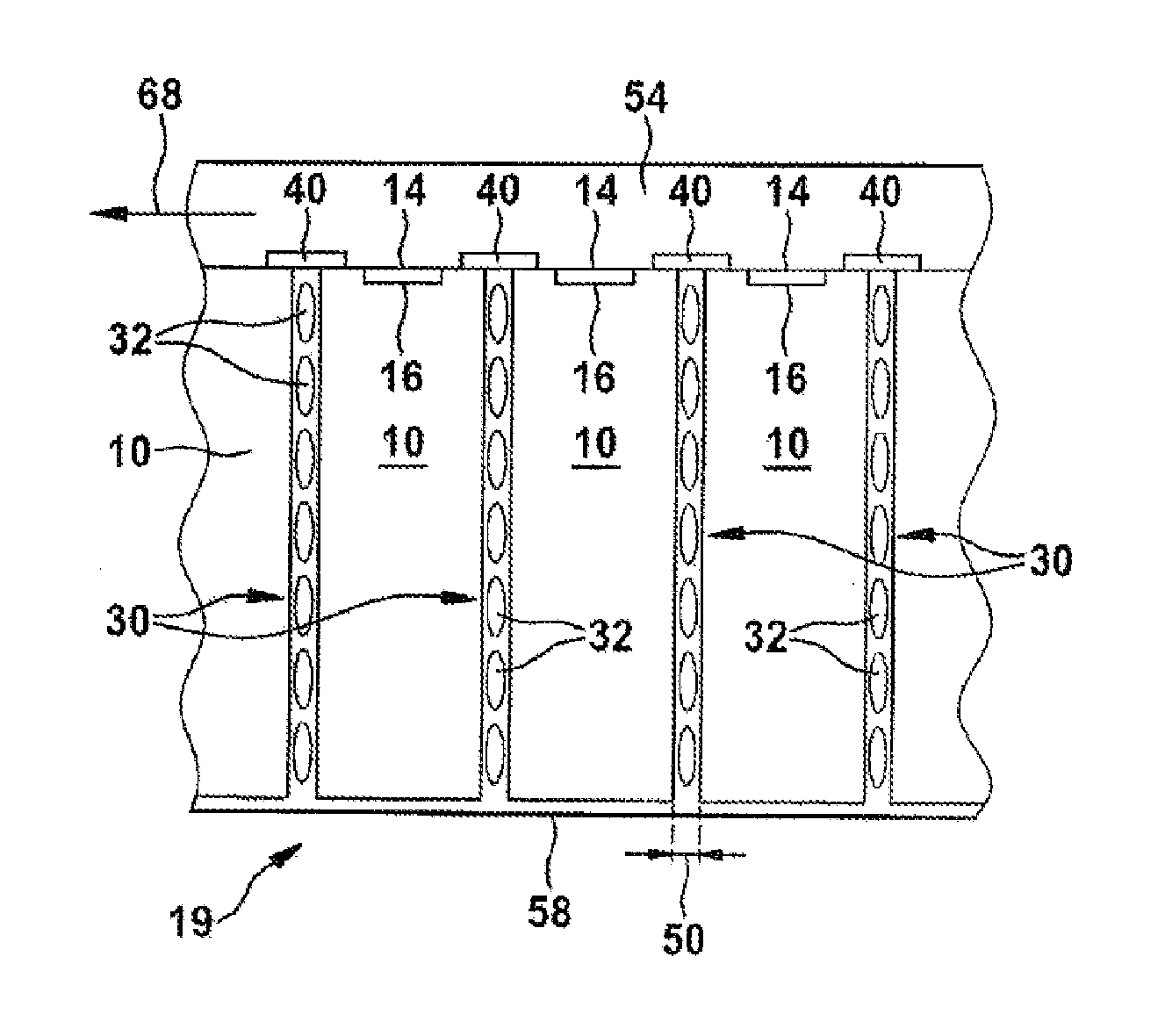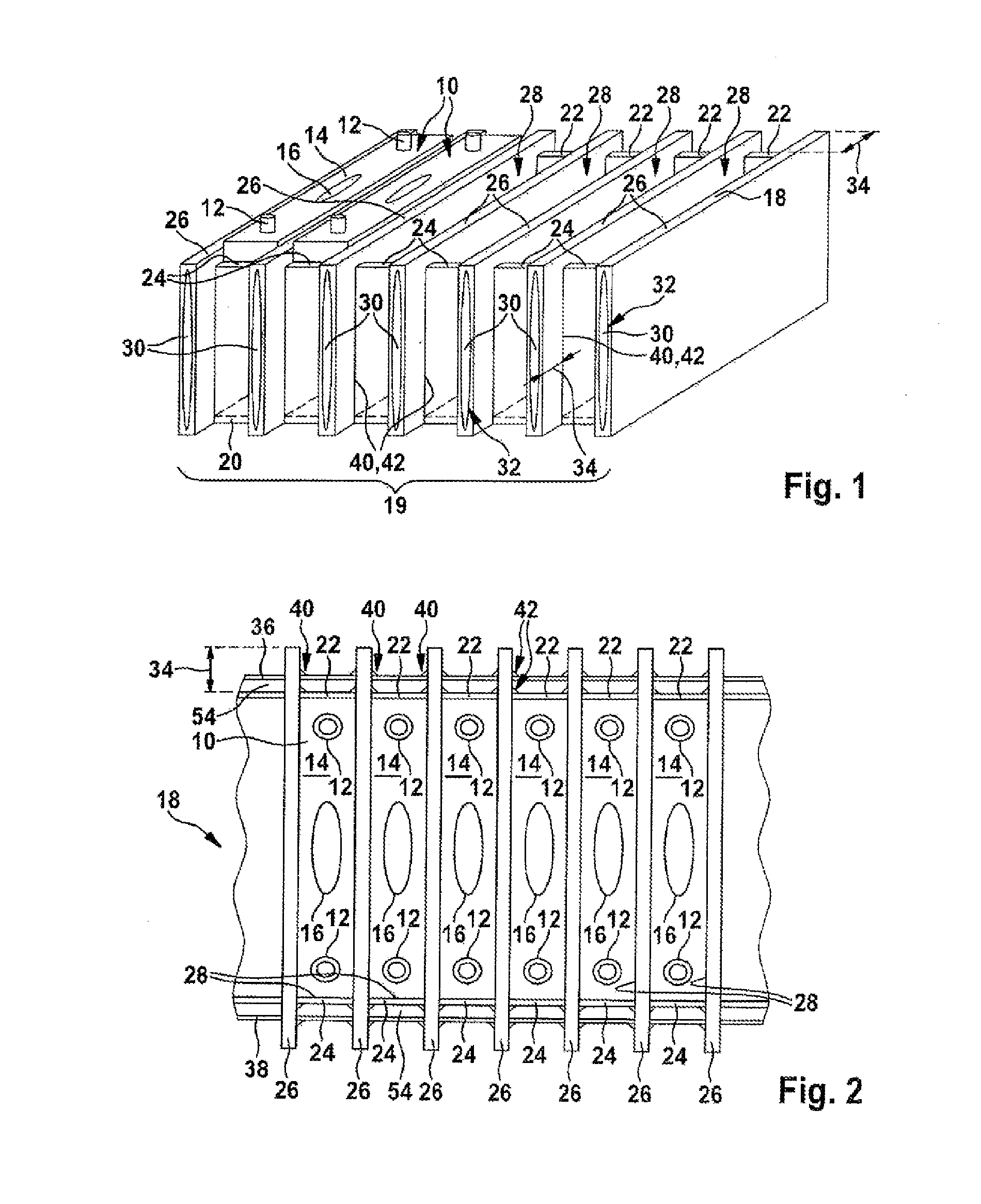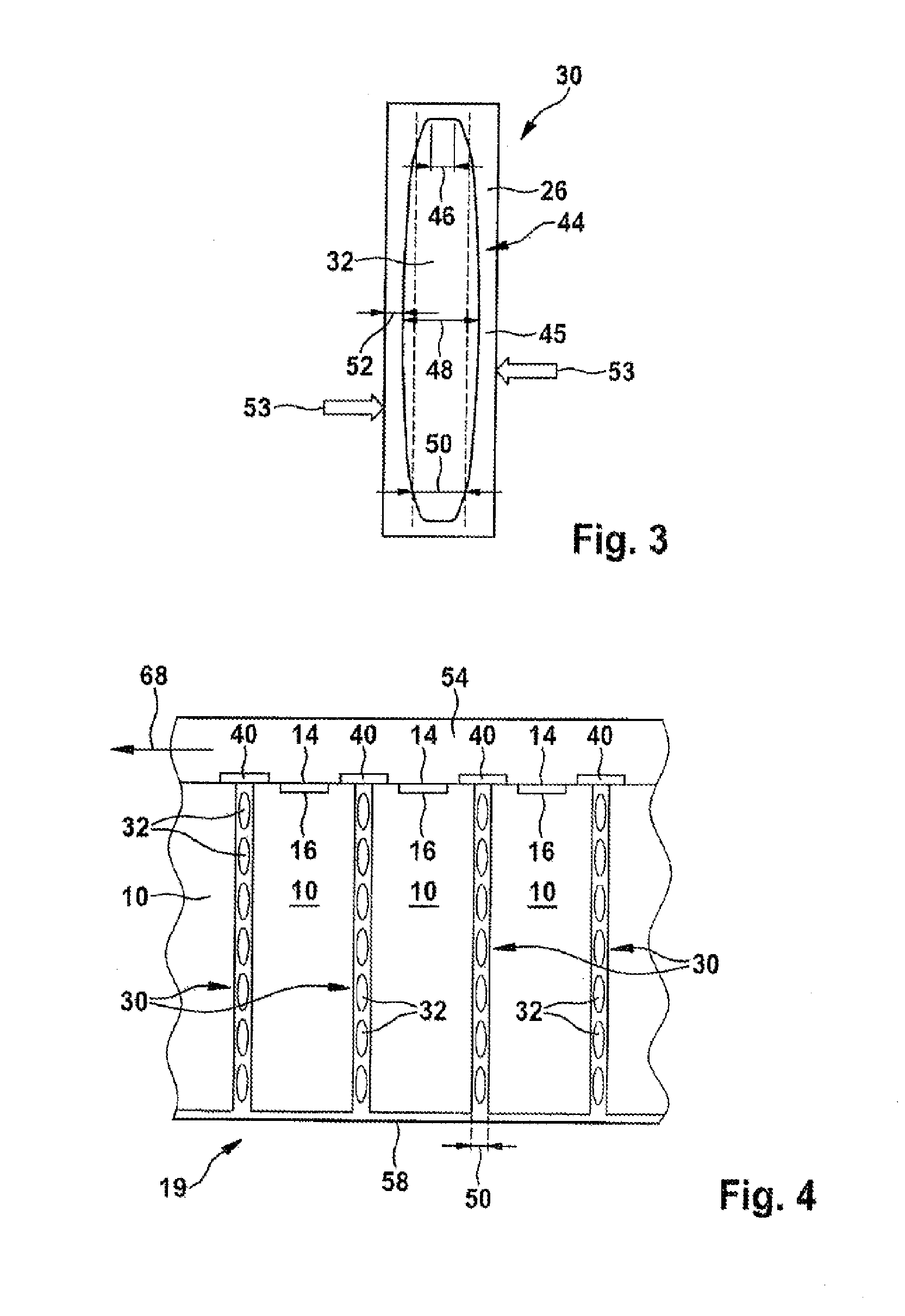Battery pack with air-type cooling
a battery pack and air-type technology, applied in the field of batteries with air-type cooling, can solve the problems of increasing the self-discharge of batteries, reducing the capacity, and “thermal runaway” of batteries, and achieves significant heat removal, cost saving, and improved temperature control effect.
- Summary
- Abstract
- Description
- Claims
- Application Information
AI Technical Summary
Benefits of technology
Problems solved by technology
Method used
Image
Examples
Embodiment Construction
[0027]The illustration in FIG. 1 shows, in a perspective plan view, a battery cell holder which comprises individual battery cell compartments in which the battery cells of a battery module are accommodated.
[0028]FIG. 1 shows a battery module 19 which comprises a number of battery cells 10. The individual battery cells 10 each have cell terminals 12 which are arranged on a top side 14 of the battery cells 10. On the battery cell top side 14, there is situated a burst valve 16 which constitutes a predetermined breaking point of the battery cell housing, via which undesired degassing of the battery cell 10 can take place. The individual battery cells 10 are accommodated in an upright position in a battery cell holder 18 which is manufactured from aluminum or an aluminum alloy or from some other material which has good heat conduction characteristics.
[0029]The battery cell holder 18 has a base 20; individual battery cell compartments 28 for accommodating the battery cells 10 are separa...
PUM
| Property | Measurement | Unit |
|---|---|---|
| thickness | aaaaa | aaaaa |
| operating temperature | aaaaa | aaaaa |
| operating temperature | aaaaa | aaaaa |
Abstract
Description
Claims
Application Information
 Login to View More
Login to View More - R&D
- Intellectual Property
- Life Sciences
- Materials
- Tech Scout
- Unparalleled Data Quality
- Higher Quality Content
- 60% Fewer Hallucinations
Browse by: Latest US Patents, China's latest patents, Technical Efficacy Thesaurus, Application Domain, Technology Topic, Popular Technical Reports.
© 2025 PatSnap. All rights reserved.Legal|Privacy policy|Modern Slavery Act Transparency Statement|Sitemap|About US| Contact US: help@patsnap.com



